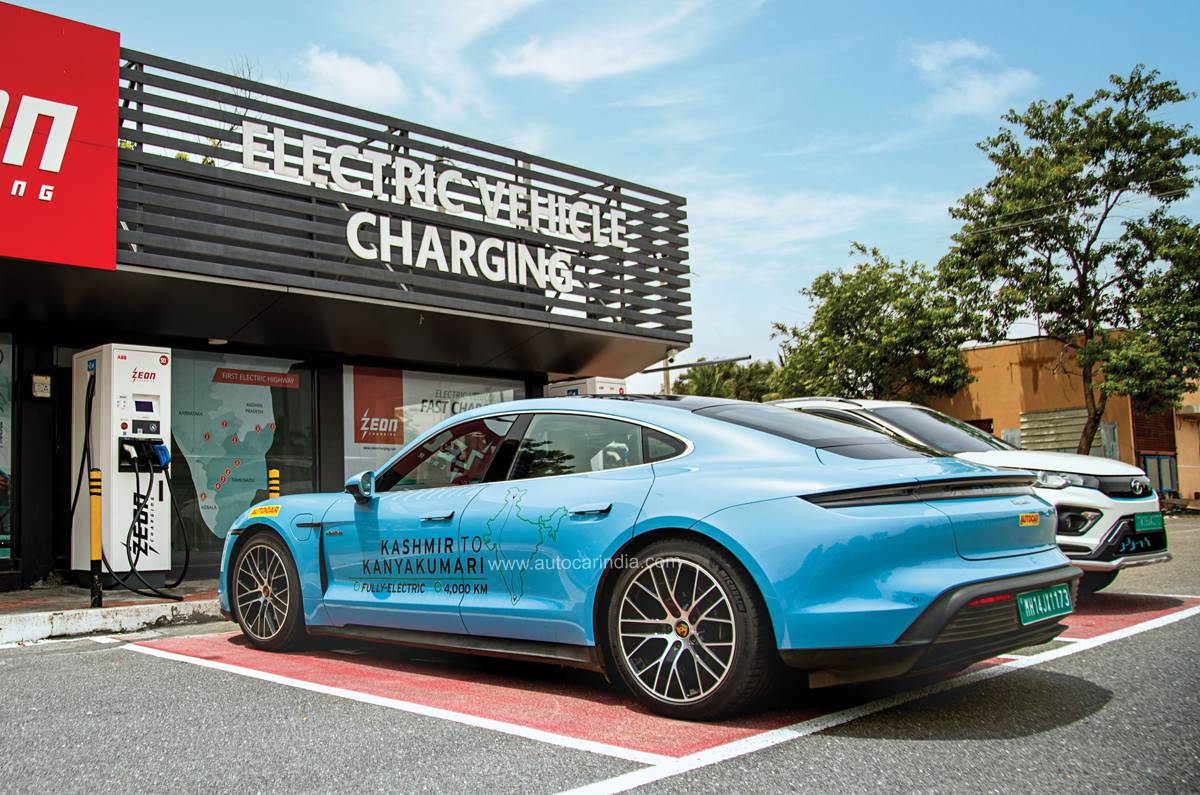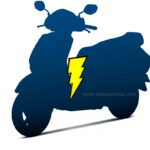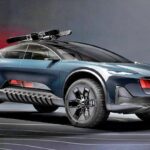
There’s little question that, as intra-city city transport, EVs trump ICE cars in virtually each method. They’re quieter, produce no tailpipe emissions, and are vastly cheaper to run. And, in case your commute is brief and you’ve got a wall-box charger at one finish, it’s doubtlessly extra handy too. Imagine by no means having to go away house to refuel your car!
That final benefit, nevertheless, will get flipped on its head whenever you try and go lengthy distances between cities, as you then develop into reliant on the still-growing community of public chargers. With a little bit of planning, although, lengthy journeys in an EV are attainable, and at Autocar India, we’ve proved that a number of occasions over.

None extra so than on our epic 4,500km journey from Kashmir to Kanyakumari in a Porsche Taycan, of which I used to be on the helm for an enormous chunk. Covering distances like this does have its ups and downs, actually and figuratively, and I can inform you first-hand that whereas it’s attainable, the expertise, for now, is way from preferrred.
Map your route round chargers
Of course, we couldn’t simply hop into the Taycan and hit the highway on a whim. While that form of footloose spontaneity is feasible in an ICE car, any lengthy journey in an EV, and positively one so long as ours, wants cautious planning. It begins by opening a map, however not Google Maps, as you would possibly in any other case. We used Plugshare, which is a community-driven EV charger app that truly enables you to plot a route based mostly on the situation of chargers! It’s extremely useful, however regardless of this, we encountered some points. In a few of the extra distant stops on our journey, reminiscent of in components of J&Ok and Rajasthan, we discovered that a few of the chargers listed on the app weren’t practical, not but activated, and in a single weird case, not even put in but. This is why it’s necessary to go away your suggestions on the app after you’ve used a charger (or have been unable to); it’ll assist others plan their journeys. In reality, look out for our feedback on varied chargers on the route from Ok to Ok.

When you view the complete map within the app, just like the picture you see above, it positive seems just like the charging community has coated the nation like moss on a river rock. And sure, with the mixed would possibly of energy corporations, oil corporations, automobile producers and charging start-ups, it has grown dramatically in a really quick time. But zoom in a bit and also you’ll see that the overwhelming majority of them – understandably – are concentrated in and across the metro cities. What we realised fairly early on in our journey is that you simply typically have to go away the principle freeway to get to the charger; generally it’s at a dealership on the town, different occasions at a lodge or restaurant, or possibly in a mall or public park. This too, with slightly little bit of planning, will be labored round. On the K2K journey, we frequently deliberate meal breaks round charging, or booked our in a single day stays at resorts that had chargers hooked up – even when not a DC quick charger, so long as we may very well be plugged in all night time.
Public quick charging pace removed from ‘quick’
This brings us neatly onto one other level, as a result of though generally situated just a bit off route, the Indian charging community is at present sturdy sufficient that you simply’re by no means actually too distant from a plug. The greater problem in the meanwhile is the character of the chargers themselves. Charging takes time – it’s one of many inherent drawbacks of EV possession, which most homeowners may have made their peace with, however issues are bettering. As tech improves, cars have gotten able to charging quicker and quicker. The Taycan we have been driving, for instance, with its 800V structure, can cost at as much as 280kW – letting its huge 93.4kWh battery get from 0-80 p.c in simply 22 minutes.
Now, after all, a 280kW DC quick charger is a utopian fantasy in all however probably the most EV-forward European international locations. But sadly in India, we’re not even shut. Most of the DC quick chargers on the Indian grid have a 25kW capability, with some going as much as 50 or 60. These days some 150kW ones are cropping up, however these are few and much between, and solely within the huge cities. In our expertise, EVs with comparatively small batteries, like Nexons and ZS EVs will be topped up fast sufficient on these sluggish ‘fast’ chargers, however higher-spec electrical cars with batteries within the 90-100kWh vary have to remain plugged in for for much longer.

So, provided that pace will not be in your facet on the subject of charging, the subsequent neatest thing you are able to do is take advantage of the time. One of the issues to do, as we talked about earlier, is planning your cost round your lunch break, however that’s assuming there’s meals close by. “We brought in the restaurant after the charger was installed,” a gas station proprietor in Punjab, whose facility was house to a brand new Tata Power DC quick charger and an excellent newer Subway outlet, advised us as we waited for the Taycan to juice up. He discovered that whereas the charger was pulling in prospects, they discovered themselves with nothing to do whereas they waited. Besides, it was one other supply of revenue to assist offset the price of the charger.
Expect the surprising
Other easy issues that helped us persist with our schedule on that lengthy drive have been charging to simply 80 p.c relatively than topping up each time. To shield the battery and forestall overheating all EVs’ charging speeds decelerate to a trickle at round 80 p.c, so why wait out that agonisingly sluggish 20 p.c. Besides serving to us get to our subsequent vacation spot faster, it’s simply thoughtful to the subsequent individual within the queue.
And sure, there typically is a queue, as a result of as quick because the charging community is rising, it seems that electrical car gross sales are rising quicker. Queues, after all, are extra probably at common places, and extra so at ones simply on the outskirts of cities, just like the vastly common Tata Motors showroom on the freeway exterior Pune, which has at all times had a car or two plugged in each time we’ve visited. This is sensible as a result of individuals belief showrooms as that’s the place their EV got here from, and the fringes of a metropolis are preferrred charging stops for these experimenting with quick highway journeys of their electrical cars.

Then there are quintessentially Indian challenges, like the facility minimize we encountered in Satara, Maharashtra. We left the car plugged in in a single day, solely to be woke up by an alert on the app that charging had stopped. Apart from ready for the facility to return, we needed to then return to the car (which was parked far away) and bodily restart the method. Only for it to occur once more a number of hours later.
Another factor to remember is which model of charger you’re going to be utilizing in your journey, as a result of each has its personal digital pockets for cost, and you must be topped up. On our journey, only a few took direct bank card funds and money funds are utterly out of the query, as is paying an attendant to do all the pieces for you, as you possibly can at a petroleum pump.
Getting there
These are however small pace bumps within the in any other case rapidly creating highway to electrical mobility in India. There are a great deal of positives too, like how CCS2 has rapidly develop into the usual charging format for four-wheelers within the nation, not like in different international locations the place there will be two or three sorts. Or merely that for those who get caught in one of many random site visitors jams frequent on Indian highways (as we did a number of occasions on our journey) you’re higher off in an EV than an ICE car – as a result of you possibly can run the AC with out having to run an engine.

The group is rising too, with apps like Plugshare creating an ecosystem of useful suggestions. There’s a protracted technique to go earlier than quick charging stations develop into as frequent and frequent as petrol stations, however till then, for those who should do a highway journey in an EV, use this story as a reference, and undoubtedly plan forward.
Also See:
Top 10 EVs with the longest claimed vary in India








